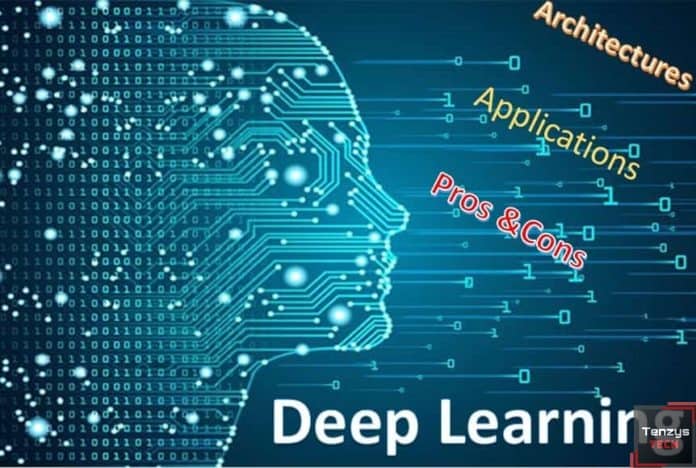In today’s rapidly growing world, Artificial Intelligence unbelievably enhanced human life in many aspects. But if we talk about advanced AI then it undoubtedly indicates deep learning. Deep learning is a base for ANN or we can say that DL is a subset of ANN. Deep learning works on algorithms that are inspired by the structural and functionally similar to the human brain neural system known as an artificial neural system (ANN). DL is a field in which more than one hidden layer is used for the manipulation of complex data. It is the hierarchical arrangement of huge data in order to manipulate for better performance than ANN.
Deep word in deep learning denotes the depth of the machine learning algorithms where ANN is known to be a shallow part. The rise of deep learning over the few years is just because of good computational capabilities and the effective arrangement and utilization of huge amounts of unsupervised data. Deep learning has a number of architectures on which it works:
Deep Neural Network (DNN)
A deep neural network is a type of ANN in which various types of hidden layers are present between the input and output layers which are used for the modeling of complex data. It is a feedback-forward architecture in which the data flow in a linear way without looping back of it.
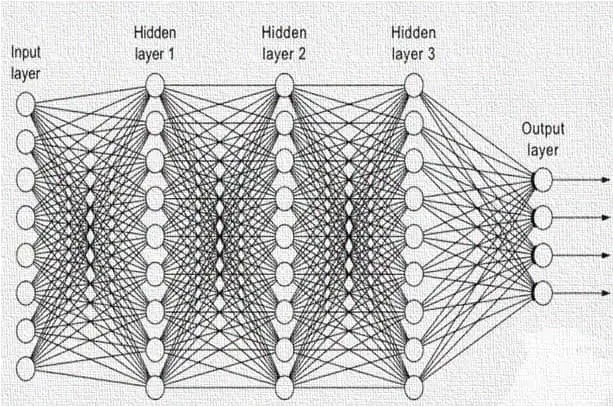
The main problems in the DNN are Overfitting and computation time. Overfitting can be avoided by using weight decay or sparsity methods while computation time can be improved by using graphical processing units (GPU) and by considering learning rate, batching, etc.
Recurrent Neural Network
It is also a kind of neural network in which information cycles are created by the computational units of ANN which represents dynamic temporal behavior. Looping is present in the network of RNN which is used for the persisting of data.
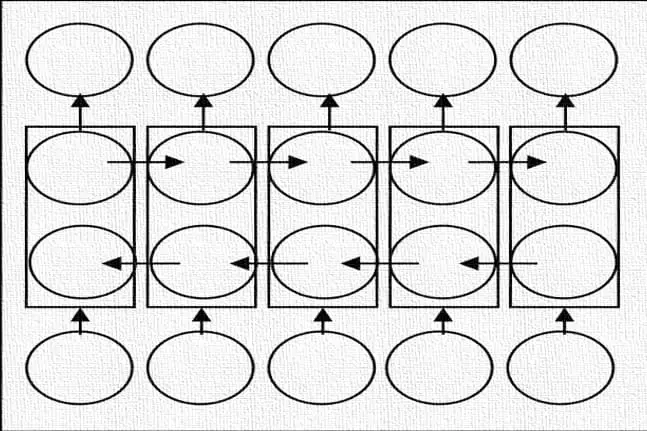
This architecture of ANN is used to connect all the previous information in the current task which is going on if the gap between them is small. But if the gap is large between the previous information and the point where it is needed then a particular type of RNN is used which is known as Long short-term memory (LSTM). These connections between previous information and current tasks help to solve real-time situations or problems effectively.
Convolutional Neural Network (CNN)
In deep learning, CNN is a multi-layered feed-forward interconnected network that is used in the extraction of information of visual imagery or we can say that it is used in the area of image detection or recognition.
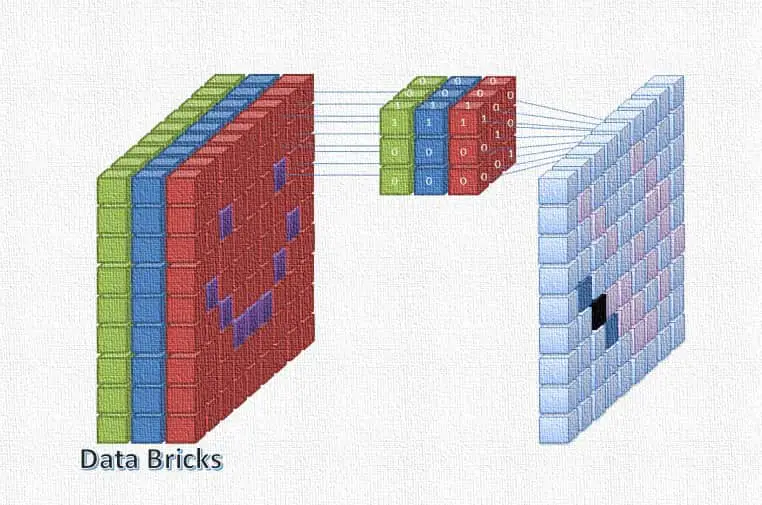
CNN extracts all the information or parameters of the image which is further used for many applications like facial recognition, optical character recognition, identification procedures, surveillance, etc. However, traditional ways for information extraction use particular methodologies but CNN automatically detects the filters of images and extracts information from them on its own.
Boltzmann Machine
This architecture is a neural network all the nodes or networks are interconnected just like the neurons. This architecture is mainly used for making inconsistent decisions. In this architecture of DL, the nodes whether they are visible or hidden all are connected to each other.
Restricted Boltzmann Machine
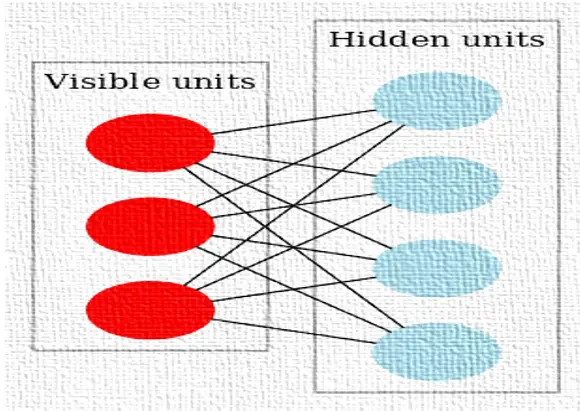
This architecture is just a kind of Boltzmann machine in which the hidden and visible nodes are connected to each other but the two or more hidden nodes are not connected to each other and also visible nodes are not permitted to connect to each other. It is used in the enhancement of the performance of speech recognition, etc.
Deep Belief Network
It is a graphical model in which hidden layers are present to convey the abstract representation of features of input data. The hidden layers are not connected with any neuron or computational layer but the hidden layers are connected to each other. It is mainly used for the training purpose of the network in a layer-wise manner by following the hierarchical graphical modeling.
Deep Autoencoder
This type of neural network is used to encode or decode the features of the input data in the Deep Belief Networks. Basically, it is the encryption and decryption of features of data (showing fewer features) without changing the sense of information of data when it flows from the layers of a deep belief network.
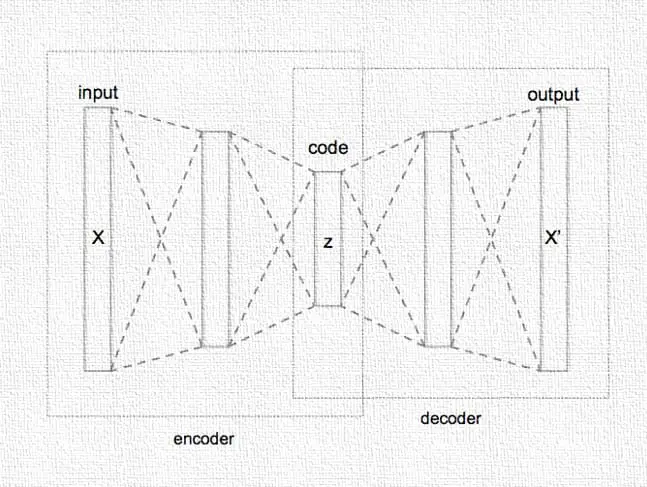
Typically, the units of the hidden layers between the input and output layers are usually less than the units of input and output layers and which are the same in the input and output layers. This encryption and decryption of data features help to identify minimal features of data to represent the data and is called dimensionality reduction.
Applications of deep learning
Object Tracking
Deep Learning enhances the great advancement in the field of object tracking. These object tracking devices are mainly used in tracing a specific person or a vehicle at the traffic signals which greatly helps the crime branch departments to trace the criminals. Object tracking also detects and identifies the class of vehicle with the help of a Convolutional Neural Network (CNN).
This application which is dependent on deep learning is also used for identifying the distance between the cars and their speed in self-driving car systems and also experiencing the vertical and horizontal distances between the objects. With the help of object tracking, we can also identify the size and position of the object in the CCTV camera footage. This application of object tracking is also used in the medical departments to detect tumors in the human body in cases of cancer-suffering people and is useful for human well-being.
Smart Surveillance using Edge and Cloud Computing
Smart Surveillance through CCTV cameras by using deep learning is another good application. Traditional surveillance record and save all the footage on hard drives and hence, decreasing its life. The new surveillance uses the cloud space to store the footage for easy backup and reduce the risk of data loss. But this method requires more data bandwidth and good upload bandwidth too. But it is costlier to fulfill the demands of higher data usage to upload the footage to the cloud.
Also, the cloud services for additional storage require a great cost according to per month costing. So, to avoid all these expenditures there is a great option to consider smart surveillance using deep learning algorithms to identify the specific important footage to process and send it to the server for uploading and saving to the cloud.
This system of smart surveillance is designed in such a way that it can scale, tolerate failures and work with multiple devices and cameras. The architecture of this surveillance has 4 stages that are Device layer, Pre-processing Layer, Processing Layer, and Cloud layer.
In the field of Fault Diagnosis
Deep learning tends to be very efficient in the field of fault diagnosis. As we know that deep learning works by extracting features from the given data. So, we have to save time in extracting features by setting essential and appropriate parameters of the deep learning network. A map should be prepared by considering the original map to the failure data classification point-to-point.
This practice helps in the extraction of artificial features. This technique would be helpful when there is a lack of fault samples in the airplanes and other equipment by using the advantage of the migration ability of deep learning. By using a rotating machinery ground testbed, we can easily use it in deep learning for state recognition, fault diagnosis, etc.
Realizing Super Resolution applications on integrated GPUs
Recent Advancement in the deep Convolutional neural network (CNN) enables deep learning to bring super-resolution images on low-powered integrated GPUs. With the help of CNN, we can easily produce the best super-resolution images or applications by adding the extra details in the extracted features of the images which can easily be maintained and realized on Intel’s Iris graphics which is an integrated graphics.
Instead of delivering large inputs, we can divide them into smaller tiles in order to use small memory bandwidth which results in the improvement of performance as well. By doing this, on integrated graphics, we can easily optimize the SR single images to SR videos with up to 44 FPS quality without any complications and frame drops. By watching its compatibility, CNN also works efficiently with high-end dedicated graphics as well.
Advantages and Disadvantages of Deep learning
Advantages
1. Deep learning can focus on what it tends to target without affecting its statistical modeling.
2. We can teach it to learn only a particular task or a particular set of tasks rather than allowing it to learn things on its own.
3. It can understand or learn from unsupervised things and act according to them without any supervision in order to instruct them to work.
4. It is capable of making new images based on its precious memories.
5. Not dependent on computation power due to which its performance remains good and gets awareness in any task more quickly and effectively.
6. It is extensible which means we can add more models of learning by just adding more layers to its neural network.
Disadvantages
1. The comparison of its achievement with respect to a hand-crafted method is very different and harder.
2. The data based on approximate statistics are not 100% accurate.
3. The efficiency is very low and has some difficult problems too.
4. Difficult to evaluate its performance in regard to real-world problems and applications, as more detailed testing techniques and analysis are required for its validation and implementation.
5. Its training requires a huge amount of data on which it gets trained as it thinks about thousands of images and videos.
6. It is expensive as it requires a large amount of memory and other computational hardware to store and compute thousands of data sets on which it is trained (implementation of algorithms).
Effects of AI on the life of Human Beings
Positive Effects of AI
1. It helps humans to do their work with greater efficiency and precision. It helps to augment their work and substitution AI in repeatedly or dangerous tasks hence reducing the loss of life. For example, the Use of NPU, Deep learning, and ANN-based robotic machines in the prediction of Land mine bombs by the military.
2. AI can save countless hours of humans and ensure an increment in their productivity instead of managing various unnecessary issues related to their daily routine jobs. For example; the Use of AI to make autonomous transportation and resolve traffic handling issues can greatly influence the life of humans by saving their precious time and also improving job productivity too.
3. Better AI facilities in the field of Healthcare greatly influence the life of human beings by reducing the risks of wrong or late diagnosis of diseases hence reducing threats to human life. For example, the use of AI diagnostic machines in the diagnosis of earlier prediction of cancer stages helps to cure it before it becomes too dangerous.
4. The use of AI in a criminal investigation for identifying the main culprit instead of an innocent one. For example, using fingerprints found on crime spots or by face recognition techniques we can easily match them with doubtable people to identify the original criminal.
5. Using AI in the field of sports for training purposes will improve the gameplay of the players in a very significant way. For example, for the training of a batsman, the AI ball thrower machine can easily detect the angle and speed of the ball according to the position and posture of the player and deliver the difficult delivery to him hence improving his/her gameplay significantly.
Negative Effect of AI
With the positive impacts of AI, there are some negative impacts of AI too. With the enhancement of AI in the life of human beings, it will significantly decrease the employment opportunities of individuals. For example; According to PwC, there will be a decrement of 7 million existing jobs in the UK from 2017-2037. These 7 million jobs will be replaced by AI but there will be also possibilities of new jobs offered to people but not confirmed that up to how much extent. This uncertainty will be a big challenge to the upcoming AI opportunities in the life of human beings.

